I spent the better part of last week with Al Gore.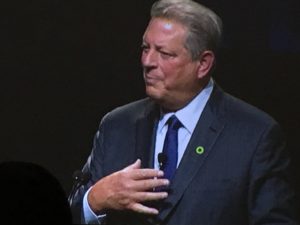
Well, me and 1300+ of my closest friends.
I had the honor of attending the Climate Reality Project Leadership Training in Pittsburgh, PA. I wasn’t sure what to expect. What I got was energy, excitement, science, data, a little bit of fear, inspiration, and optimism. It was almost overwhelming. After three days we all came home with an assignment; show leadership about climate change. Go out and speak, write, talk, and act about Climate Change, about quickly reducing CO2 to zero, and about spurring the installation of renewables to supply the world’s energy needs.
There is no doubt that our climate is changing around us. For some time, the scientific community has been raising the alarm about the effect human activities – burning fossil fuels for transportation, to heat and cool our buildings, to generate electricity – is having on the levels of CO2 in the atmosphere. These levels have built-up beyond the carrying capacity of the earth’s systems and are trapping the heat of the sun. This is causing a general warming of the planet and is playing havoc with the natural balance of things.
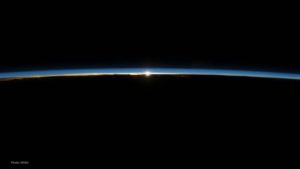 It is big, but the earth is a fragile place that is sensitive to seemingly small changes in temperature. Since the mid-1800’s, human activity has raised planetary temperature 1.2-degrees Celsius. The scientific community is in agreement, exceeding the limit of 1.5-degrees will have catastrophic results.
It is big, but the earth is a fragile place that is sensitive to seemingly small changes in temperature. Since the mid-1800’s, human activity has raised planetary temperature 1.2-degrees Celsius. The scientific community is in agreement, exceeding the limit of 1.5-degrees will have catastrophic results.
The fact that something is going on with the weather is becoming clear to folk on the street. Every day I talk with people who are puzzling about the weather:
- ‘Isn’t this supposed to be the rainy season? Why are we having a drought?’
- ‘I harvested 10 pounds of tomatoes after what should have been the killing frost date.’

- ‘Hey it’s shorts weather in NYC in late October!’
- ‘Why bother going to Florida if it is so warm in the northeast.’
They are also talking about the weather chaos of 2017: Massive hurricanes, typhoons, and rain events causing not just wind damage, but extraordinary flooding as the storms stalled over land; extreme wildfire events that in October alone claimed 23 lives and 3500 structures in California; record breaking heat-waves where temperatures in Pakistan reached 129.2-degrees Fahrenheit; worldwide expansion of drought stricken areas and increasing desertification resulting in loss of farmable land and limiting access to drinking water; polar temperature increases melting enough ice to allow cruise ships through the Northwest Passage.
These events are being exacerbated by the accumulating CO2 in the atmosphere.
People are pretty resilient and adaptable. We can build walls and bigger flood plain areas. We can hunker down in a storm. But we need to ask ourselves, how much suffering we are willing to observe and how much suffering we are willing to experience for the convenience of burning oil, gas and coal to fuel our lifestyles. 2017’s chaos has brought massive suffering.
The industrial world that we know today was built on the extraction and burning of fossil fuels but that doesn’t mean that our future needs to be dependent on the technology of our grandparents. Someone at the conference quipped, “If Thomas Edison came back the one thing that he would recognize is the electric grid that he invented.”
We, as a world community, have within our grasp the ability to positively disrupt the way we generate energy while: maintaining our standard of living, helping the developing world modernize, bringing CO2 emissions to zero, reducing pollution, increasing world health, growing jobs and mitigating the effects of climate change. Miracle? No, switching to renewable energy.
We hear lots of talk about saving coal jobs. Long ago, we cut down and burned the old-growth forests to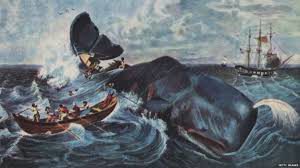 create heat and light. Then we discovered oil, whale oil, and gradually moved away from wood. We depended on whale oil for light until we found something better – gas – and those whale hunting and extraction jobs went away. Now we are recognizing that extracting, processing and burning oil, natural gas, and coal is expensive, dirty, and rapidly becoming technologically obsolete – antiquated.
create heat and light. Then we discovered oil, whale oil, and gradually moved away from wood. We depended on whale oil for light until we found something better – gas – and those whale hunting and extraction jobs went away. Now we are recognizing that extracting, processing and burning oil, natural gas, and coal is expensive, dirty, and rapidly becoming technologically obsolete – antiquated.
Rather than save coal jobs, we should recognize that the age of coal is over and spend our resources on retraining coal industry workers to build, install, maintain, and own solar and wind systems. I have a vision for the US coal fields:
- Retrain the coal mine workers to build, install, maintain, and manage solar and wind systems.
- Transfer ownership of the destroyed, strip mined, mountains and lands to electric cooperatives owned jointly by the mine owners, miners, local electric companies and the railroads who have served them.
- Cover the stripped mined mountains and lands with solar fields that are built in the states where they are to be installed. Install wind turbines on the surrounding mountain ridges.
- In partnership with the railroads, local electric companies, and state and federal governments, install transmission lines along the railroad rights-of-way to the major demand centers.
- Empower the miners to manage the cooperatives.
- Actively reforest the remaining land.
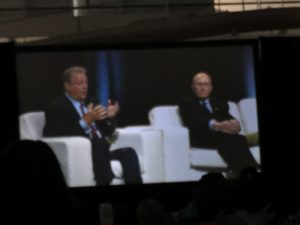 End result of this vision? A clean, thriving economy with engaged workers and a transformed landscape that attracts eco-tourism and business. As Al Gore put it at the Climate Reality conference, “the solution to climate change is also the solution to the global economic malaise”.
End result of this vision? A clean, thriving economy with engaged workers and a transformed landscape that attracts eco-tourism and business. As Al Gore put it at the Climate Reality conference, “the solution to climate change is also the solution to the global economic malaise”.
The idea of changing whole electric generation and distribution systems may prompt the question, “What can I do to make a difference?” A lot!
- You can learn more about the issues and solutions. Go to the GreenBeams Reliable Sources page for great places to get the facts.
- You can get involved by reaching out to your local, state and federal representatives to support renewable energy, the Clean Power Plan and the Paris Accord and to oppose funding for fossil fuels.
- You can contact your electricity supplier and switch to renewable power generation.

- You can support the Sierra Club’s Ready for 100 effort that is advocating for local governments to commit to 100% clean and renewable energy for all.
- You can plant a tree or two or more. At the conference, Dr. Henry Pollack stated, “The best technology for carbon capture is a tree”, to which Al Gore quipped, “And when you scale it up it is called a forest.”
- You can encourage your office building to join your city’s 2030 District. Philadelphia announced its 2030 District on October 27. At the press conference this was hailed as, “A shining moment for Pennsylvania as it becomes a model state for climate action”.
- You can get an energy audit and then make the improvements that it recommends.
- You can change your habits to reduce your energy demand.
- You can demand products made from recycled materials.
- You can buy an electric car and recycle your old combustion engine.
- You can change your appliances to all electric.
- You can install solar panels on your house or join a community solar program.
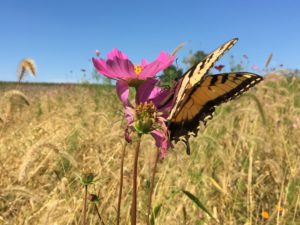 A good person leaves an inheritance for his/her children’s children. (Proverbs 13:22) A good world community leaves the inheritance of a thriving, healthy planet for the children of the future. If we ignore climate change, what kind of world will we have in 2050? If we ignore climate change, what kind of inheritance are we leaving for our children’s children and their children’s children?
A good person leaves an inheritance for his/her children’s children. (Proverbs 13:22) A good world community leaves the inheritance of a thriving, healthy planet for the children of the future. If we ignore climate change, what kind of world will we have in 2050? If we ignore climate change, what kind of inheritance are we leaving for our children’s children and their children’s children?
